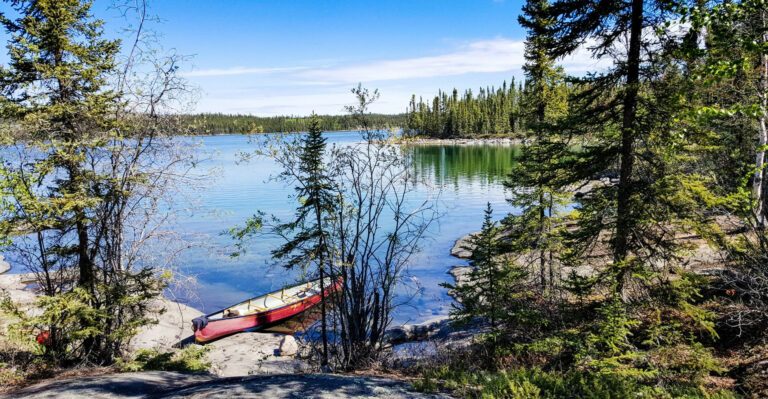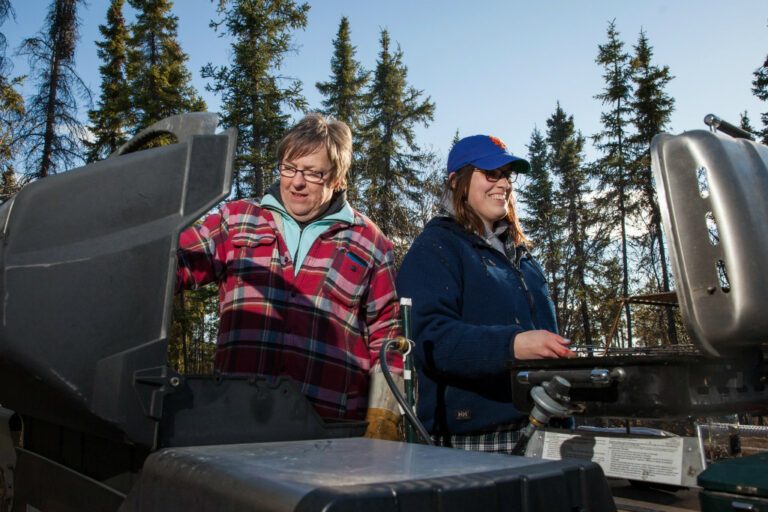Solar power installation, like this Fort Simpson array, could be part of an alternative local economy, say some | Photo NT Energy
Powered by diamonds, the Northwest Territory’s GDP has surged to $3.8 billion since 1999, but local benefits have been few and not equally shared in what MP Dennis Bevington calls the world’s largest small community.
Co-host with MLA Bob Bromley of Building Localized Economies, a two-day meeting sponsored by Ecology North, Bevington said that income disparity and poverty are increasing in the territory as food, energy and shelter costs inflate.
Getting past extraction
“Resource extraction has not produced the results we need to build an economy,” Bevington said. “There is no multiplier effect from money spent in the community; Most of the money goes to southern suppliers of food and fuel.”
The answer is not more mines, or tapping the shale oil deposits of the Sahtu with hydraulic fracturing, the two like-minded politicians told the 70 people who turned out for the event this past weekend, but building local economies based on small-scale agriculture, tourism, fishing, trapping and alternate energy sources.
Jackie Milne, founder and president of the Northern Farm Training Institute, told the meeting that annual spending on food in the territory is $170 million — more than enough to support small-scale intensive agriculture that can earn up to $200,000 a year from two or three acres.
There was discussion about the growth of community gardens and reducing dependence on fossil fuels, with examples raised of replacing the dark genie with energy from solar arrays in Lutsel K’e, and the increasing reliance on wood pellet boilers from Yellowknife to Fort MacPherson.
Finance Michael Miltenberger remembered returning North from university with dreams of building a cabin in the bush and living from the land, and realizing that it would require about $20,000 to realize.
“Now we are being pushed to do what we talked about in the ’70s,” Miltenberger said. “The question is the same: how do we afford the lifestyle. It costs a small fortune to live a simple life but the payback is significant.”
Meanwhile, in the Sahtu
Industry minister Dave Ramsay did not appear at the meeting, although his department did kick in some money and expertise, but he did contribute a large dollop of unintended irony with a public celebration of the territory’s shale oil deposits.
The National Energy Board announced Friday that the Canol and Bluefish formations hold as much as 200 billion barrels of oil – recoverable only through the controversial method of hydraulic fracturing.
Husky and ConnocoPhillips suspended their exploration programs in the shale belt last year, but Ramsay said the NEB announcement “puts the wind in our sails,” and should hasten construction of the Mackenzie Valley Highway to Norman Wells.
But quicker than you can say ‘stranded resources,’ Statistics Canada chose the same day to release new numbers that confirm that the ever-rising cost of living in Yellowknife continues to outpace the rest of Canada.
Even with continuing low oil prices that all but guarantee the territory’s shale deposits will not be tapped in the foreseeable future, the consumer price index increased 1.6 percent over the past year to 129.8, compared to 126.2 for RoC.
The biggest price increase over the last 12 months was for food, which was up 9.1 percent, the largest increase in more than five years. Fuel oil was down by 23.9 percent and gasoline 15.6 percent from April 2014.







